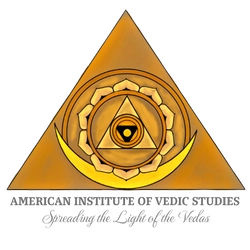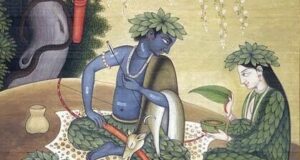Herbology for Yogis
Traditional Yoga has always rested on a special yogic diet with special yogic herbs to go along with it.
 Herbs are powerful aids in the practice of yoga, working at both physical and mental levels. They are useful for both disease treatment and disease prevention, for increased vitality, for rejuvenation, and for awakening all our higher faculties. Anyone involved in yoga practice at any level should consider taking helpful herbs on a regular basis. Traditional Yogis commonly have taken herbs to aid in their practice and to stimulate both prana and higher awareness.
Herbs are powerful aids in the practice of yoga, working at both physical and mental levels. They are useful for both disease treatment and disease prevention, for increased vitality, for rejuvenation, and for awakening all our higher faculties. Anyone involved in yoga practice at any level should consider taking helpful herbs on a regular basis. Traditional Yogis commonly have taken herbs to aid in their practice and to stimulate both prana and higher awareness.
This yogic usage of herbs is very different than taking drugs or psychedelics at a recreational or personal level. It aims at subtle natural changes in our perception and nervous system over time, not dramatic mind-altering substances that usually have significant side-effects. For this reason many of the herbs used are mild in their effects, which accumulates over time.
Many Ayurvedic tonic herbs that are becoming commonly available worldwide today are excellent for yoga practice for body and mind. These include ashwagandha, bala, shatavari, shilajit, amlaki and haritaki. Such nutritive herbs possess overall strengthening properties for the muscles and nerves, especially helpful for vegetarians who may need a deeper form of nutrition. Yet commonly available herbs and spices like ginger, turmeric, cinnamon, tulsi, cloves and cardamom also have an important value for yoga practice, as they balance our Agni or digestive fire and help us access the higher Agnis of the mind and prana. Herbs are important adjuncts that can catalyze yogic processes that otherwise may be difficult to achieve by our personal efforts alone.
We can all benefit from a daily usage of herbs. Our daily herbs may be as important as our daily bread. The effects of herbs, however, do not manifest immediately. Like food, the benefits from herbs accrue over time and require the right diet and lifestyle regimens to support them. For this reason, we must give herbs the proper circumstances in which to work and not simply treat them like drugs taken independently of our lifestyle.
For improving mantra practice, a simple formula of 3 parts Brahmi and 1 part vacha (calamus) can be used, taken with warm water and honey one teaspoon per cup. For those who can get it, Brahmi juice is excellent morning and evening for cleansing the nervous system and promoting meditation. Amla juice is a similar option more cleansing to the blood and plasma.
Even tea can aid in yoga practice. Green teas are good for this purpose and have long been used along with meditation practices in Buddhist traditions. India’s tradition of chai can be helpful as long as it is not overly brewed or too heavy or acidic and has good spices like ginger along with it.
Yoga practitioners should have a thermos of warm ginger or tulsi tea to take during the day to stimulate the Agnis of both body and mind.
Honoring plants, trees, herbs and flowers in one’s garden, in nature or in puja and temple rooms is part of this broader Vedic herbal approach.
Herbs for Hatha Yoga, Asana and Pranayama
All healing herbs have a potential use in yoga practice. Here we will focus on the most important types, which are those that aid in asana practice and can benefit pranayama.
- Herbs to increase flexibility, promote circulation and stimulate the movement of energy. Such herbs aid in the proper performance of asanas by improving musculoskeletal function and coordination. They are usually classified as anti-rheumatic or anti-arthritic agents. They are mainly herbs for hatha yoga.
Typical Ayurvedic herbs: guggul, shallaki, prasarani, myrrh, nirgundi, turmeric, saffron, cinnamon, ginger, dashamula (ayurvedic formula).
These are usually taken with honey and warm water. Besides the usage of individual herbs there are many Ayurvedic formulas like Yogaraj Guggul and other type of guggul based formulas that are useful here. Such herbs do well with sweating therapies and saunas and with aromatics like tulsi, mint or eucalyptus. They do better if supplemented with oil massage, particularly with medicated sesame oil formulas like Karpuradi tailam, Mahanarayan, Chandanadi, Balashwagandha or Dhanvantaram.
- Herbs to increase physical energy and vitality. These strengthen ojas, our primary vital energy, and through it promote soma, the nectar of the mind, which is the higher form of ojas or our vital essence. They are usually tonic and rejuvenative agents, with strong nutritive properties, strengthening also the reproductive system. They build stamina and endurance, affording steadiness in yoga postures and in pranayama.
Typical herbs: ashwagandha, amalaki, shatavari, bala, shilajit vidari, ginseng, dioscorea, kapikacchu, lotus seeds, lotus stem, makhana.
These herbs are usually taken with warm milk, raw sugar, ghee and other nutritive items to boost their strengthening powers. They combine well with raw (unheated) honey, particularly if it is fresh (less than six months old). They are best taken along with a nutritive vegetarian diet (like the anti-vata diet). A few spices should be added to them, like ginger and cinnamon, to aid in their digestion as they tend to be heavy in properties. Their optimal usage is through special Ayurvedic confections and jellies like Chyavan Prash, Brahma Rasayana, or Agastya Rasayana. They can be used as massage oils externally as with Balashwagandha tailam or Kshirabala, which can be used on the head and back.
- Herbs for cooling and cleansing the body and nervous system. These herbs remove toxins from the blood, the tissues and internal organs. They are usually bitter or astringent in taste and may contain large amounts of chlorophyll.
Typical herbs: aloe gel, turmeric, guduchi, gentian, barberry, gotu kola, brahmi, manduka parni.
These herbs are taken with ghee, aloe gel or honey and other reducing. They are often combined with raw food diets, green juices, and other detoxification measures. Brahmi juice is excellent.
Herbs for the Mind and Meditation
Many herbs possess nervine properties and various action on the mind. They can be divided into several main categories and have a usage for the higher yogas.
- Herbs to stimulate the mind and senses and improve perception. These open the channels, increase cerebral circulation and remove mucus from the head. They increase perception and discrimination, facilitating the process of insight and meditation. They are similar to herbs to move prana.
Typical herbs: calamus (vacha), tulsi, basil, pippali (long pepper), bayberry, ephedra, sage, elecampane.
These herbs are taken along with warm water and honey (particularly honey that is older, which has more drying properties) to improve their effects. They are the main herbs used in nasya therapy and can be taken in the form of nasya oils. Some like tulsi (holy basil) make excellent herbal teas.
Herbs to increase awareness and intelligence, strengthening in the mind. These are special tonic and building agents for the mind and nerve tissue, similar to the tonics for the body. They increase soma in the nervous system, helping us to gain concentration, contentment and joy and to overcome pain.
Typical herbs: shankha pushpi, brahmi, manduka parni, ashwagandha, haritaki, shatavari, bala, kapikacchu, arjuna, lotus seeds, shilajit.
These herbs, like the tonics for the body which they resemble, are usually taken along with warm milk, raw sugar, raw honey, ghee and other nutritive items to boost their strengthening powers. Brahmi ghee is very good in this regard. There are various pills like Brahmi vati, Brahmi pearls or Medhavati.
- Herbs for calming the mind. These are mild sedative and pain relieving agents, but also slow down the mind for meditation. They are less nutritive than the mind tonics and better for reducing anxiety and agitated nerves.
Typical herbs: jatamamsi, valerian, ashwagandha, nutmeg, sandalwood, passion flower, kava kava, lady’s slipper.
These herbs may be taken with other soothing agents like ghee or aloe gel to improve their calmative properties. Jatamamsi is regarded as the best of these herbs. Ashwagandha lehyam is a good Ayurvedic confection, as is Brahmarasayan They work well with oil massage to the head or Shirodhara. Chandanadi tailam is very good for this, as is Kshirabala.
Availability of Herbs
All such Ayurvedic herbs, formulas and preparations can be easily found in Ayurvedic stores in India or in companies that mail order Ayurvedic herbs. Many individual Ayurvedic herbs mentioned above can now be found at natural food stores, health food stores and pharmacies in the West, usually as individual herbs in tablet or powder form, but extending to some combinations or formulations. These easier to find herbs include tulsi, turmeric, bacopa (manduka parni), centella (brahmi), ashwagandha, shatavari, shilajit, triphala. Other herbs mentioned are commonly available as they are part of western herbology as well including aloe, ginger, cinnamon, sage.
Ayurveda does not just give individual herbs but has complex formulas and a wide variety of herbal preparations of oils, ghees, gugguls, asavas, arishtas, prash, avaleha and lehya that have more complex properties. Many Ayurvedic companies have proprietary formulas for the mind or stress reduction, including many of the herbs for the mind mentioned above.







